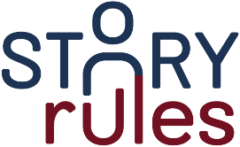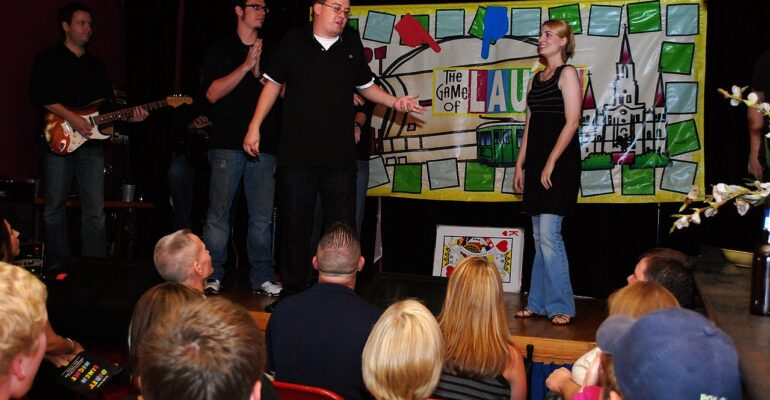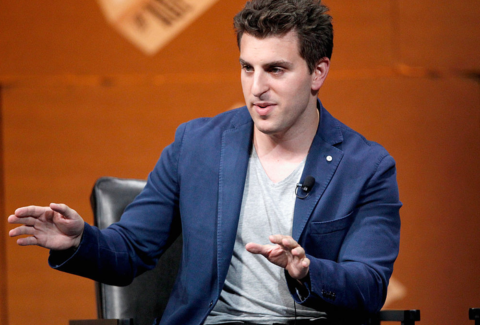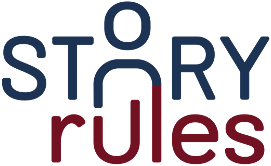How Improv can help you cope with the uncertainties of life
It’s time for my content recommendations for Jan-21 – a book, a podcast, articles and videos.
Let’s get started
1. Book
a. ‘Improvise! Use the Secrets of Improv to achieve Extraordinary Results at Work’ by Max Dickins
My first tryst with Improv was not a very impressive one.
Several years back, I was attending an improv workshop at the quaint and idyllic ‘Pagdandi Bookstore Cafe’ in Pune. The instructor – a 25-something guy – was taking a bunch of (mainly) youngsters through the basics of improv. I must have been the oldest guy in the group.
Perhaps the coach was inexperienced, or maybe the audience was a tad too rowdy – I just found the experience very underwhelming.
If this is improv, count me out, I thought.
That impression has been smashed (and how) by this fabulous book on the fascinating art of Improv.
Improv, short for ‘Improvisational theatre’ is the art of unscripted theatre. But it goes so much beyond that. It’s a whole different way of thinking. A way of thinking that has applications in almost all aspects of life – whether at work or at home.
The author, Max Dickins is an Improv theatre artist and a coach. In this highly readable book, he shares the lessons from improv that can help you to:
- Listen better
- Become more agile
- Improve spontaneity
- Enhance collaboration
- Embrace failure and learn from it
Max illustrates these lessons with several engaging examples – from the stage and from real life.
I found three things impressive about the book.
1. How effortlessly it straddles the philosophical with the practical
On the philosophical side, here are some of the thought-provoking gems from the book:
- As Keith Johnstone puts it: ‘Many teachers think of children as immature adults. (But) It might lead to better and more “respectful” teaching if we thought of adults as atrophied children.’
- We act ourselves into the future, we don’t think our way there. By acting rather than thinking, creativity is not just easier, we also stumble onto different sorts of thoughts.
- An improviser’s default reaction to a mistake is not, ‘Oh no!’ but instead, ‘How can we use this?’… Jazz legend Miles Davis once said: ‘It’s not the note you play that’s the wrong note – it’s the note you play afterwards that makes it right or wrong.’
I especially loved that last one!
On the practical side too, the book has a ton of exercises that you can use at work – especially to improve the quality of idea-generation. These exercises can be used during meetings, brainstorming sessions or offsites. Here’s are a few examples
- Listening game: Divide into pairs. Each pair should have a conversation together for around 90 seconds (the topic could be anything, for example, the gym). Each person should speak for roughly the same amount of time. The twist is that the first word in your response should be the same as the last word of your partner’s response. This is a great listening training game because, having no idea what word your partner will end on, you can’t pre-plan what you are going to say.
- What’s the Wrong Answer: In this game, you invite the group to design what is definitely not the right answer to the problem at hand. This puts them in a fun, playful space as the need to be ‘good’ is totally lifted.
- Chumbawamba moment: Every week at the team meeting we’d have a ‘Chumbawamba moment’ where we’d all share an example of where we’d got knocked down and then got back up again!
2. The use of research-backed data to substantiate the points
The book is packed with research-based backing for a lot of the concepts covered. For instance, here’s Max talking about why we struggle to listen:
“If you’ve ever wondered why it’s so hard to stay present and fully listen to another person, the answer lies in the ‘Speech-thought differential’: we think faster than other people can talk. We can comprehend around 400 words per minute as a listener, yet most people tend to talk at around 130 words per minute… (furthermore) The rate at which we can form thoughts is estimated to be between 1,000 and 3,000 words per minute. So, we listen faster than we talk, and we think faster than we listen. No wonder we drift off!”
3. The NLDC Framework!
Of all the concepts, my single biggest takeaway from the book was the simple yet effective NLDC framework (Notice-Let Go-Decide-Communicate). It’s super-useful to deal with the unexpected snafus that life has a tendency of throwing at us.
Here’s how Max describes them:
NOTICE The first step in the loop involves observing what has happened, or is happening, as accurately as possible. It’s an obvious thing to say, but we cannot react to change if we don’t notice it first. You need to notice the facts as they are. This requires us not to be stuck in our heads but to be present to the moment.
Sometimes we are so caught up within the weeds that we fail to notice when something significant changes.
LET GO Noticing a change is not enough. You must also remain calm despite it. If we panic, we lose the emotional balance required to adapt to it successfully. First, we must surrender our current idea or plan in order to choose a response that fits the facts we’ve just observed. Second, we need to reframe this change as an opportunity, in order to prevent fear paralysing us. We must ask ourselves: ‘Where’s the offer here?’ In short, we say ‘Yes, and …’ to the change and not ‘Yes, but …’.
I often struggle with this part – my mind is in a state of wishful thinking – wanting for the status quo to continue. I should, in the words of Anna and Elsa, ‘Let it Go’…!
DECIDE Next, we have to decide what to do from the various options available to us. The important thing here is to make this decision quickly. We can’t know for certain what the outcome of our decision will be, so we need to act without full information. Improvisers say that the only bad choice you can make is no choice.
COMMUNICATE Finally, having made a decision, we act on it – which in improvisation, and so often in life, involves communicating this choice clearly and persuasively to others. We need them not only to understand it but to buy into it too.
This is a book that is especially essential reading for the ‘left-brain’, structure-dependent types (like me) who need to balance that need for structure and certainty with the Improv-inspired comfort with chaos and living in the moment.
2. Podcast
a. The Prof G Show: Bitcoin and Cryptocurrencies
I’ve written about this thought-provoking podcast before. But I found this episode to be highly insightful – especially given the massive Bitcoin rally over the last year.
In this episode, Prof. Galloway speaks with Michael Saylor, the founder and CEO of MicroStrategy, an enterprise software firm, that has made a series of massive investments in Bitcoin.
Saylor does a great job of articulating why Bitcoin is rallying so much, and why now.
3. Articles
a. Rebel Foods: Light-bulbs and an Infinite Game by Jaydeep Barman
I would see these massive hoardings for new restaurants in Pune – Behrouz Biryani, OvenStory Pizza, Mandarin Oak Chinese – and wonder… ‘Where the hell are these restaurants located?’
And that’s when I read and realised about the concept of the ‘cloud-kitchen restaurant’.
Last month, I stumbled upon this fascinating piece by Jaydeep Barman, the co- founder of Rebel Foods, the company which has pioneered a whole new business model in the food business.
This article offers some superb storytelling – right from the horse’s mouth – breaking down the Rebel Foods journey into the key phases and explaining how they arrived at their critical ‘lightbulb moments’.
Fascinating stuff.
b. A tale of 2020 in 20 charts by Mckinsey
Mckinsey & Co. is like a Gangotri for Data-Storytellers around the world.
Two of the key frameworks I teach – the Pyramid Principle (by Barbara Minto), and the Charts Cheat Sheet (inspired by Say it With Charts by Gene Zelazny) – emerged out of Mckinsey.
So when a friend shared a post about their 20 best charts for 2020, it got my attention.
In this post, they share 20 charts sharing data about key trends of 2020. As you’d expect the pandemic dominates.
Read the article to observe how Mckinsey crafts a clear, comprehensive one-sentence message on the top of each of its charts. Also, observe the chart choices made. Some good lessons there.
(I would have used better highlighting for some of the charts though!)
(Hat tip – Kaushik K).
c. Do You Have a Job, Career or Calling? The Difference Matters by Melody Wilding
I found this simple classification of work into three categories useful. Some roles are simply jobs – done for the paycheck (say a restaurant waiter). Some can be a career (a typical corporate job, where you are looking forward to climbing the ladder, but at the end of the day, maintain a separate set of ‘passions’ outside the workplace).
Finally, there is the ‘calling’ – when you are emotionally invested in your work.
The article offers a few tips to graduate between the levels.
4. Videos
a. Who’s the Captain by Mitchell and Webb (4:31)
I was introduced to the British Comedy sketch duo Mitchell and Webb, by my cousin Prahlad – and find myself frequently re-watching some of their classics.
This one certainly qualifies as one – with the duo taking a dig at some of the ridiculous names given by European sailors to the ‘new lands’ they discovered. Hilarious stuff.
b. The Story of Braille (3:30)
This one was actually shown to my son in one of his classes at school – and I found the story fascinating. Louis Braille was a prodigy and it is amazing how he managed to achieve so much despite losing his eyesight at a very young age. An inspiring video to show your kids.
That’s it folks: my recommended reads, listens and views for the month.
Stay safe and healthy!
Image Credits: commons.wikimedia.org







